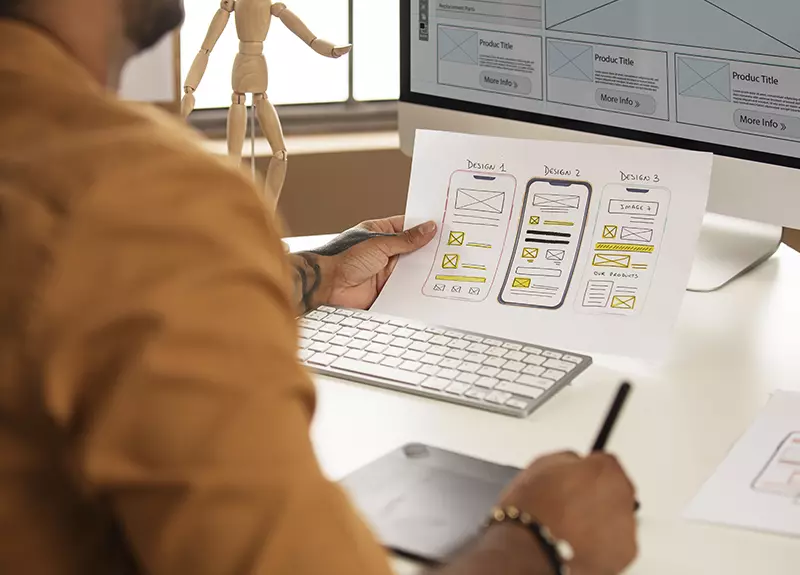UX Iteration Process
Embark on a journey through the fascinating realm of UX iteration, where the pursuit of perfection meets the dynamic landscape of user-centric design. Join us as we unravel the iterative process, exploring the principles of design thinking and the art of crafting user experiences that evolve and improve over time.
Unveiling the Power of Iterative Design Thinking
Embracing Design Thinking Principles
At the core of the iterative process design thinking lies a commitment to empathy, creativity, and collaboration. Designers immerse themselves in the user’s world, seeking to understand their needs, challenges, and aspirations. This empathetic approach sets the stage for a design process that is centered around creating solutions that truly resonate with the users.
The Continuous Loop of UX Iteration
UX iteration is a continuous loop, a journey of refinement that begins with understanding user feedback and ends with delivering an enhanced user experience. Designers gather insights, prototype solutions, test them with users, and use the feedback to iterate on the design. This cyclical process ensures that the user experience is in a constant state of improvement, adapting to the evolving needs of the audience.
Rapid Iterative Prototyping: A Catalyst for Progress
Prototyping for Swift Progress
Rapid iteration is fueled by the concept of rapid iterative prototyping, a method where designers quickly create prototypes to test and validate their ideas. This agile approach allows for swift progress, as designers can gather feedback early in the process and make adjustments on the fly. Rapid prototyping empowers designers to explore various design solutions, accelerating the evolution of the user experience.
User-Centricity at the Core
In the iterative engineering design process, user-centricity is not just a goal; it’s a guiding principle. Designers prioritize the needs and preferences of users at every stage of the process. By constantly seeking user feedback, designers ensure that their solutions align with user expectations, resulting in a product that resonates with its intended audience.
Charting Progress Through Iterative Engineering Design
Engineering Excellence Through Iteration
The iterative engineering design process takes inspiration from engineering principles, where precision and improvement are the driving forces. Engineers work closely with designers, iterating on the technical aspects of the design to ensure seamless implementation. This collaborative effort between design and engineering ensures that the final product not only looks good but also functions flawlessly.
The Art of Adapting and Improving
In the world of UX iteration, adaptation is key. Designers and engineers embrace change, using each iteration as an opportunity to adapt and improve. This flexibility allows for the incorporation of new ideas, technologies, and user insights, ensuring that the user experience remains innovative and aligned with the ever-evolving landscape of user expectations.
Harnessing the Power of Feedback Loops
Continuous Learning and Improvement
Central to the UX iteration process is the concept of feedback loops. Designers actively seek feedback from users, stakeholders, and team members at every stage of the design process. This feedback serves as valuable insights that inform design decisions and drive improvements. By embracing a culture of continuous learning and improvement, designers can refine their designs iteratively, leading to a more polished and user-friendly final product.
Iterating Based on User Needs
User needs are at the forefront of the iterative design process. Designers prioritize understanding the needs, preferences, and pain points of users, using this knowledge to inform their design decisions. By iterating based on user needs, designers can create experiences that are tailored to the specific requirements of their target audience, resulting in higher levels of user satisfaction and engagement.
Embracing Agility and Flexibility
Agile Principles in Action
Agility is a hallmark of the UX iteration process, enabling designers to respond quickly to changing requirements and market dynamics. By adopting agile principles such as collaboration, iteration, and adaptability, designers can deliver value to users faster and more efficiently. This nimble approach allows for greater flexibility in responding to feedback and adjusting the design direction as needed.
Flexibility to Pivot
In the world of rapid iterative prototyping, flexibility is key. Designers must be willing to pivot and explore alternative solutions based on user feedback and testing results. This willingness to iterate and adapt ensures that the design remains aligned with user needs and market trends, even as requirements evolve over time. By embracing flexibility, designers can navigate the iterative process with confidence and agility.
Fostering Collaboration and Communication
Team Collaboration for Success
Effective collaboration is essential for the success of the UX iteration process. Designers, developers, stakeholders, and users must work together closely to ensure that everyone’s perspectives are heard and valued. By fostering a culture of collaboration and open communication, teams can leverage diverse viewpoints and expertise to drive innovation and deliver exceptional user experiences.
Clear Communication Channels
Clear communication channels are crucial for ensuring that feedback is effectively communicated and acted upon. Designers use a variety of tools and techniques, such as design reviews, user interviews, and stakeholder meetings, to facilitate communication throughout the iterative engineering design process. By maintaining open lines of communication, teams can stay aligned on project goals and objectives, reducing the risk of misunderstandings and delays.
Refine, Enhance, Succeed: Elevate Your UX with GraphicDigits!
GraphicDigits is your partner in refining user experiences through iterative processes. Our iterative UX iteration process ensures that your digital products continuously evolve to meet user needs and expectations. With each iteration, we refine, enhance, and perfect the user experience, ultimately leading to success in the digital landscape. Trust GraphicDigits to guide you through the iterative journey and unlock the full potential of your UX design.
Empower your digital initiatives with GraphicDigits as your UX iteration partner. Let us help you navigate the iterative process, refining your user experiences to achieve unparalleled excellence. Ready to elevate your UX to the next level? Contact us today and discover how GraphicDigits can transform your digital products through iterative UX design. Your journey, our expertise – where refinement leads to success.






